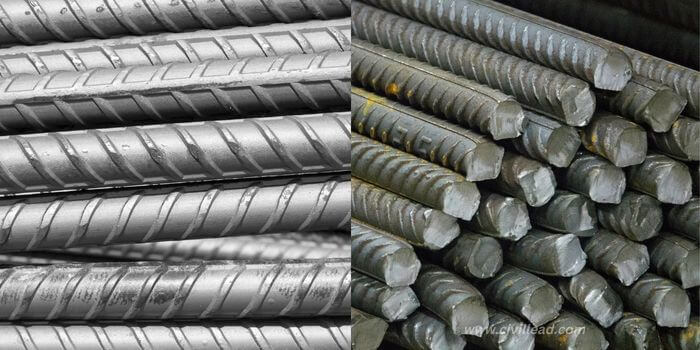Discover the functions, types, advantages, and disadvantages of admixtures in concrete. Learn how water-reducing, retarding, and accelerating admixtures enhance concrete properties. Explore the benefits of air entraining, pozzolanic, and damp-proofing admixtures. Find out how these additives improve workability, durability, and strength. Get insights from an expert article writer and gain a deeper understanding of What Is Admixture? Functions of Concrete Additives or Admixtures. Read now!
Introduction
Admixture, also known as concrete additives, is a crucial component in modern construction that enhances the properties of concrete. These chemicals or materials are added during the mixing process to improve workability, durability, strength, and other performance aspects of concrete. This comprehensive guide will explore the various types of admixtures, their functions, advantages, disadvantages, and frequently asked questions, providing you with a deeper understanding of the subject.
Functions of Concrete Additives or Admixtures
Concrete admixtures serve several essential functions, making them indispensable in construction projects. Some of their key functions include:
- Improved Workability: Admixtures help in increasing the workability of concrete, making it easier to pour, place, and finish.
- Enhanced Strength: Certain admixtures increase the compressive and tensile strength of concrete, ensuring it can withstand heavy loads and stresses.
- Reduced Water Content: Water-reducing admixtures decrease the amount of water required for concrete without compromising its properties, leading to higher strength and reduced permeability.
- Setting Time Control: Admixtures can accelerate or retard the setting time of concrete, depending on project requirements.
- Improved Durability: Admixtures enhance the durability of concrete by making it more resistant to weathering, chemical attacks, and abrasion.
- Air Entrainment: Air-entraining admixtures introduce tiny air bubbles into concrete, enhancing freeze-thaw resistance and workability.
Types of Admixtures
There are several types of admixtures, each designed to serve specific purposes in construction. Let’s explore them in detail:
Water-Reducing Admixture

Water-reducing admixtures, also known as plasticizers, allow the reduction of the water-cement ratio while maintaining the desired workability. This results in increased strength and improved durability.
Retarding Admixture

Retarding admixtures slow down the setting time of concrete, which is beneficial in hot weather conditions or when more time is needed for placing and finishing.
Accelerating Admixture

On the other hand, accelerating admixtures speed up the setting time of concrete, beneficial in cold weather or when rapid construction is required.
Air Entraining Admixture

Air entraining admixtures create tiny air bubbles in concrete, enhancing freeze-thaw resistance and improving workability.
Pozzolanic Admixture

Pozzolanic admixtures, like fly ash and silica fume, react with calcium hydroxide to form additional cementitious compounds, improving concrete strength and reducing the heat of hydration.
Damp-proofing Admixture

Damp-proofing admixtures are used to reduce the permeability of concrete, preventing moisture from penetrating and damaging the structure.
Gas Forming Admixture

Gas forming admixtures produce gas bubbles in concrete during mixing, reducing its density and improving its thermal insulation properties.
Air Detraining Admixture

Air detraining admixtures remove excess air from concrete, ensuring better compaction and reducing the risk of voids and honeycombing.
Alkali Aggregate Expansion Preventing Admixture

This type of admixture helps prevent the harmful alkali-aggregate reaction, which can cause cracking and deterioration in concrete.
Anti-washing Admixtures

Anti-washing admixtures reduce the tendency of concrete components to segregate during mixing, preventing bleeding and improving stability.
Grouting Admixtures

Grouting admixtures enhance the flow properties of grout, ensuring better penetration and bonding in masonry and concrete structures.
Corrosion Preventing Admixture

Corrosion-preventing admixtures protect the reinforcing steel in concrete from corrosion, prolonging the lifespan of structures.
Bonding Admixtures

Bonding admixtures improve the adhesion between old and new concrete, making them ideal for repair and rehabilitation projects.
Fungicidal or Germicidal Admixture
These specialized admixtures inhibit the growth of fungi and bacteria on concrete surfaces, ensuring better hygiene in specific environments.
Coloring Admixtures
Coloring admixtures introduce pigments to concrete, offering a wide range of decorative options for various architectural projects.
Advantages of Admixture
Concrete admixtures offer several advantages that make them indispensable in modern construction:
- Improved workability and pumpability, reducing labor and construction time.
- Enhanced strength, durability, and resistance to various environmental factors.
- Greater design flexibility and aesthetic options due to coloring admixtures.
- Enhanced cohesion and bonding with other building materials.
- Reduced cracking and shrinkage, resulting in longer-lasting structures.
- Improved resistance to chemicals and aggressive substances.
- Better performance in extreme weather conditions.
Disadvantages of Admixture
While admixtures offer significant benefits, there are some drawbacks to consider:
- Admixture cost can increase the overall project expenses.
- Improper dosage or use may lead to undesired concrete properties.
- Some admixtures may cause adverse reactions with certain cement types.
- Quality control and proper application are essential to avoid potential issues.
- Overreliance on admixtures may neglect the importance of proper concrete mix design.
Conclusion
Admixtures play a vital role in modern concrete technology, revolutionizing the construction industry with their ability to enhance workability, strength, and durability. By understanding the different types of admixtures and their functions, engineers and construction professionals can make informed decisions, leading to more efficient and durable structures.
FAQs
1. What are concrete admixtures, and how do they work?
Concrete admixtures are chemicals or materials added during the mixing process to improve various properties of concrete. They work by altering the cement-water ratio, controlling setting time, introducing air bubbles, and enhancing durability.
2. Can admixtures replace proper concrete mix design?
No, admixtures should complement proper concrete mix design, not replace it. A well-designed concrete mix, combined with the right admixtures, yields the best results.
3. Are admixtures harmful to the environment?
Most modern admixtures are formulated to be environmentally friendly and comply with regulatory standards. However, their environmental impact depends on their specific composition and usage.
4. Can I use multiple types of admixtures in a single concrete mix?
Yes, it is possible to combine different types of admixtures to achieve specific performance requirements. However, it’s crucial to follow manufacturer guidelines and conduct proper testing.
5. How do I choose the right admixture for my construction project?
Selecting the right admixture depends on project requirements, weather conditions, desired properties, and compatibility with other materials. Consulting with concrete experts and manufacturers is advisable.
6. Can admixtures be used in all types of concrete?
Admixtures are compatible with most types of concrete, including ready-mix, precast, and site-mixed concrete. However, compatibility testing should be performed to ensure optimal results.







